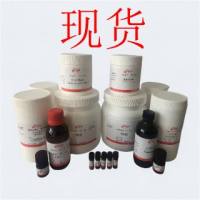Cannabinoid Receptor Binding to Membrane Homogenates and Cannabinoid-Stimulated [35S]GTP-S Binding to Membrane Homogenates or Intact Cultured Cells
互联网
598
Radioligand-binding assays can be used to obtain information about the binding characteristics of a ligand to its receptor or the general location of binding sites within a tissue or even provide evidence for the existence of a specific receptor. In the case of the cannabinoid receptor system, radioligand binding has been instrumental for each of these applications. While receptor binding can provide the above information, it says little about the efficacy of the ligand interacting with it. Binding assays that assess the effect of an unlabeled receptor ligand on the binding of the radiolabeled guanosine triphosphate (GTP) analog [35 S]GTPγS provide such information and may be the most sensitive assays available for determining the relative efficacies of ligands that act through G protein-coupled receptors, like the CB1 cannabinoid receptor. Herein are described methods for radioligand binding to both brain membrane homogenates and membrane homogenates of cultured cells, as well as a recently developed protocol for assessing agonist-stimulated [35 S]GTPγS binding to intact cultured cells.









